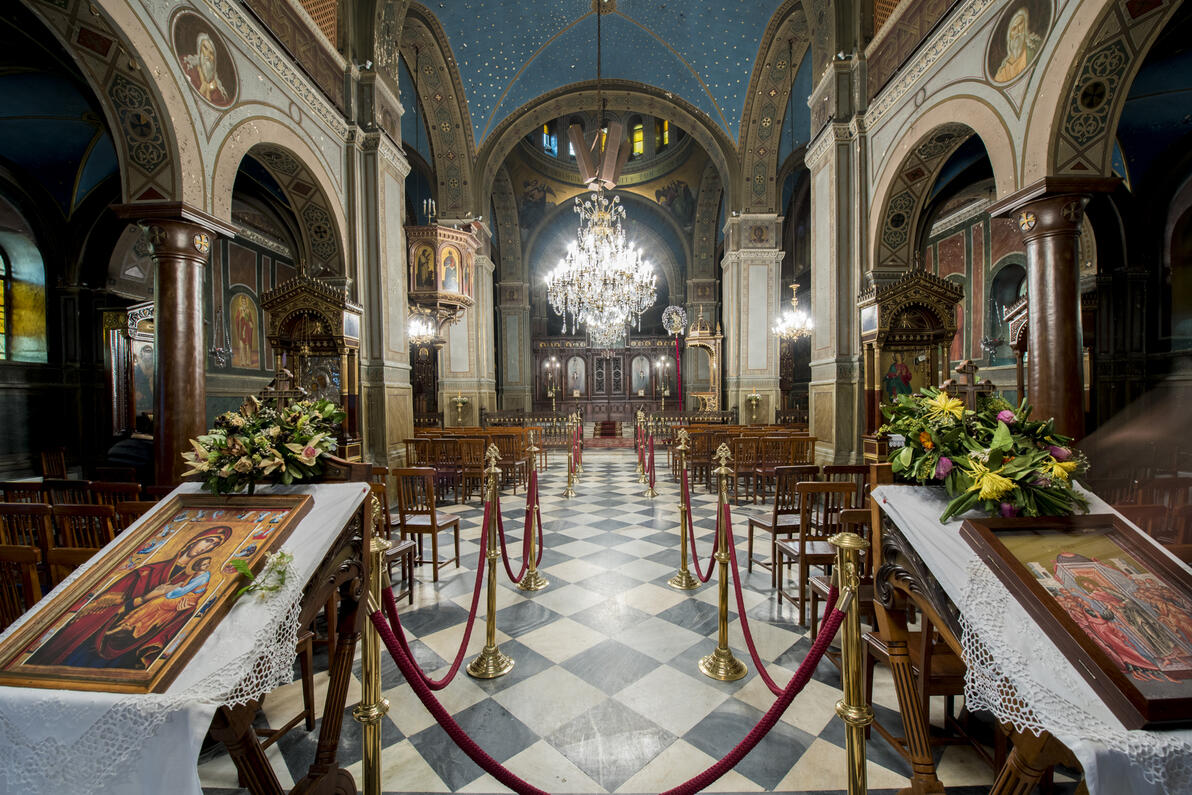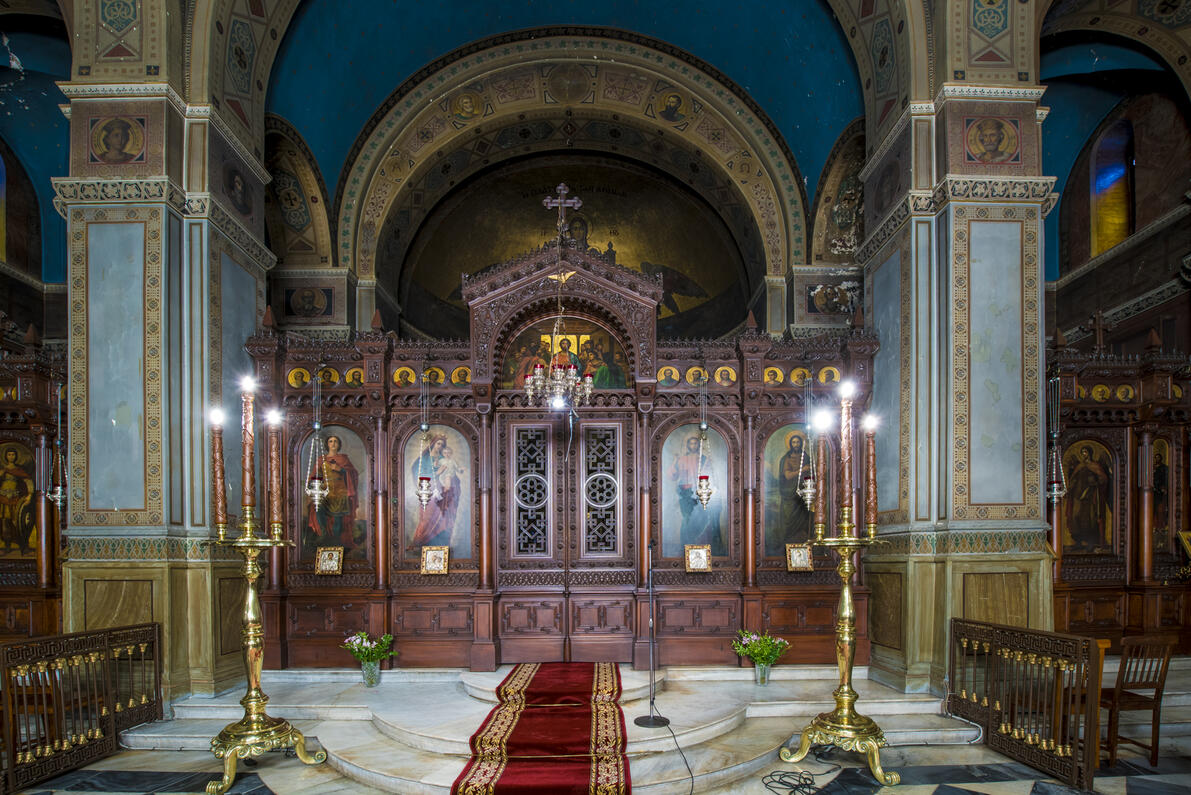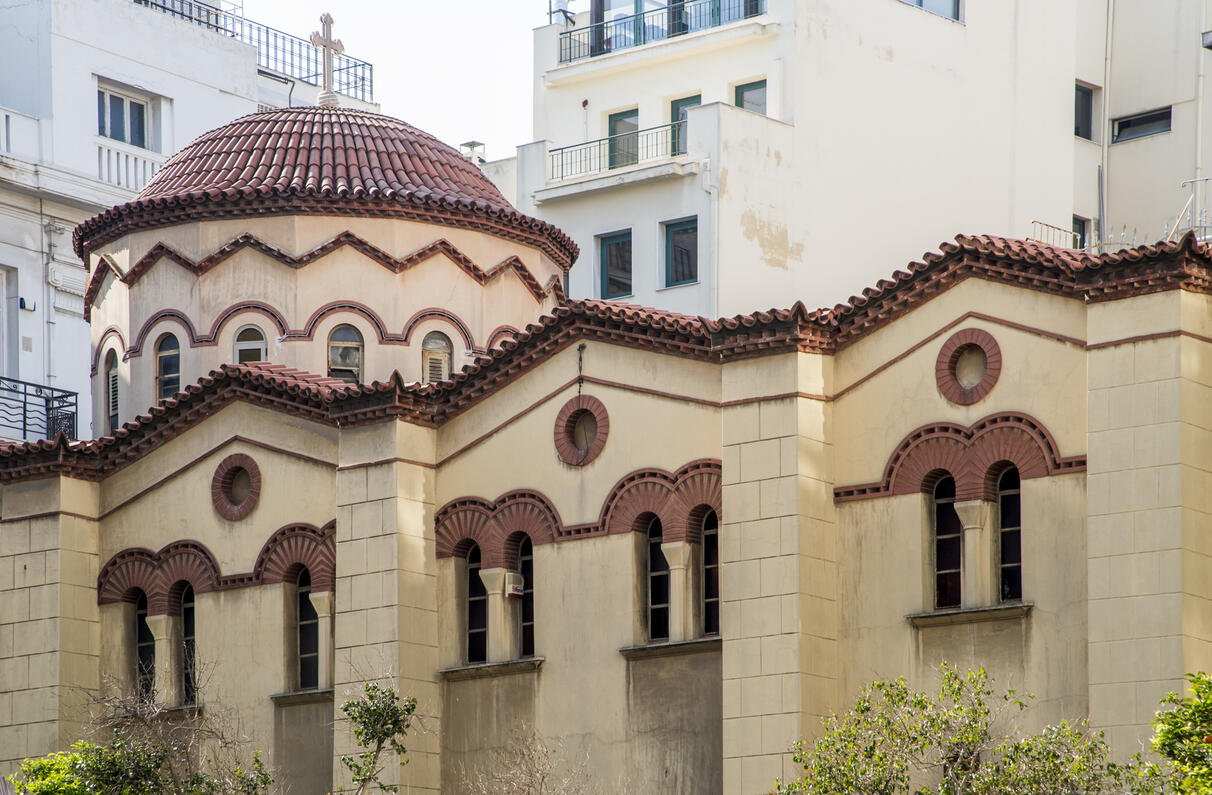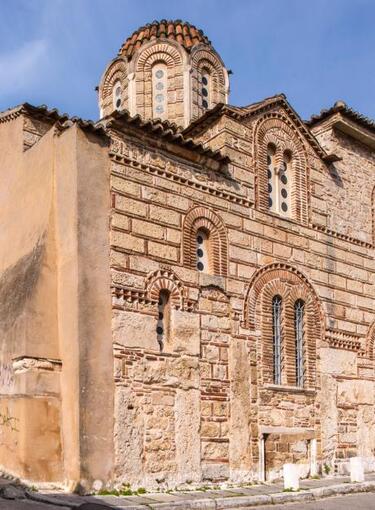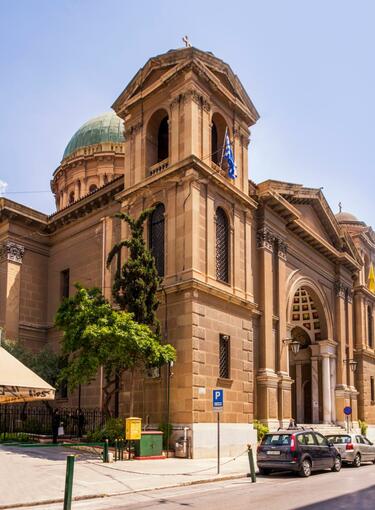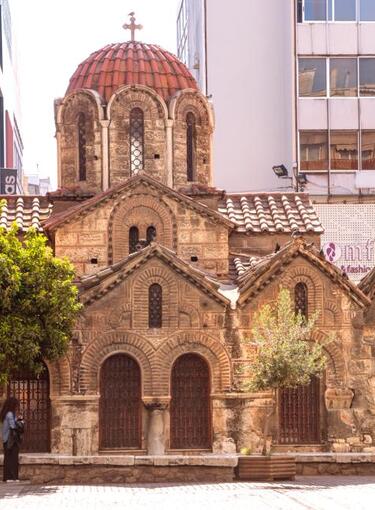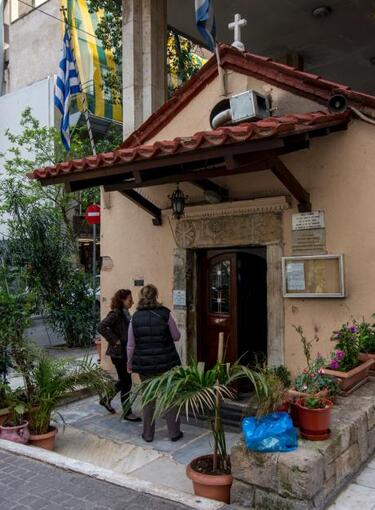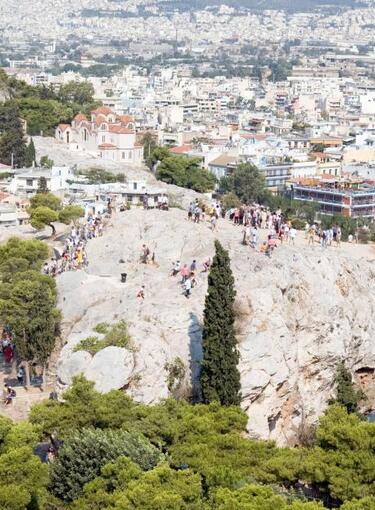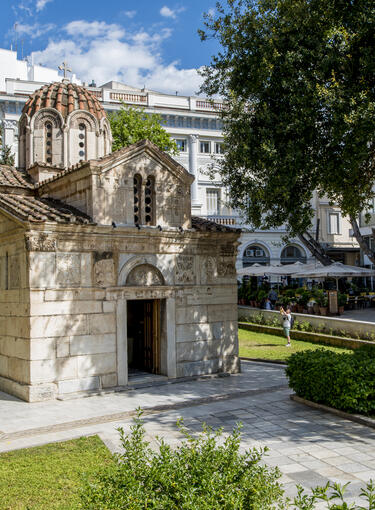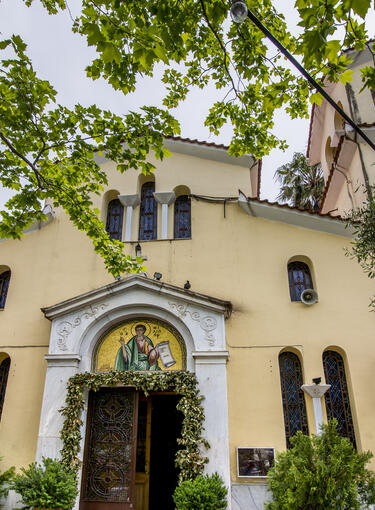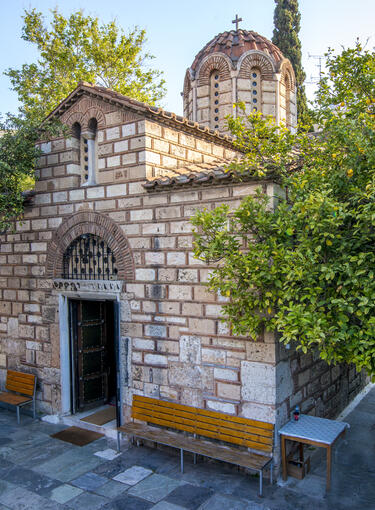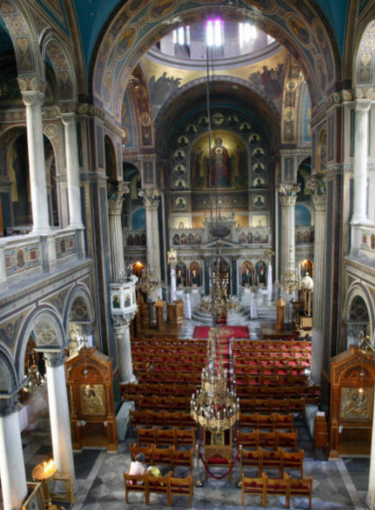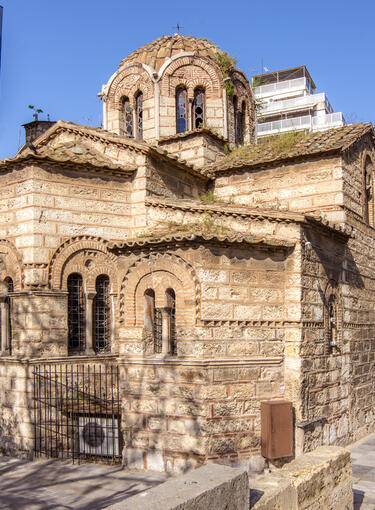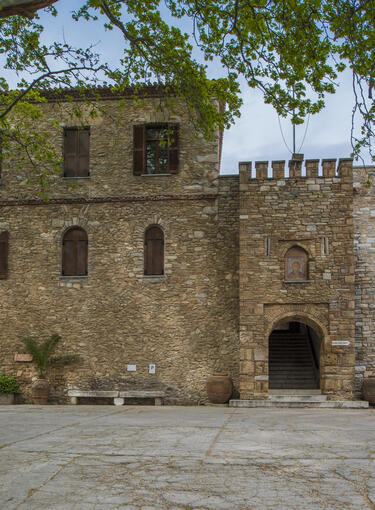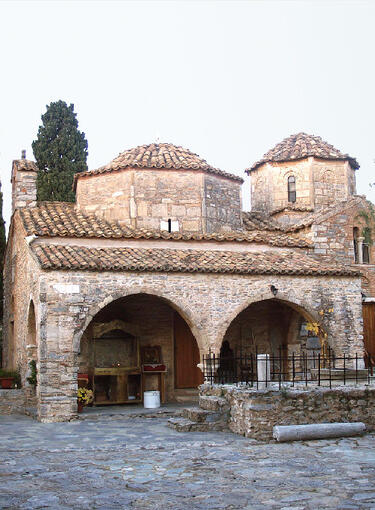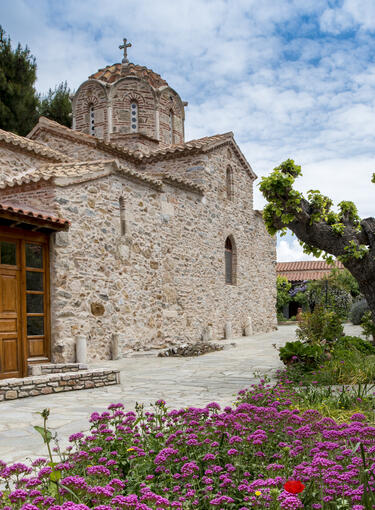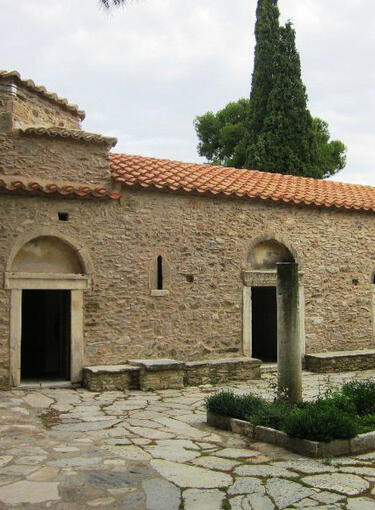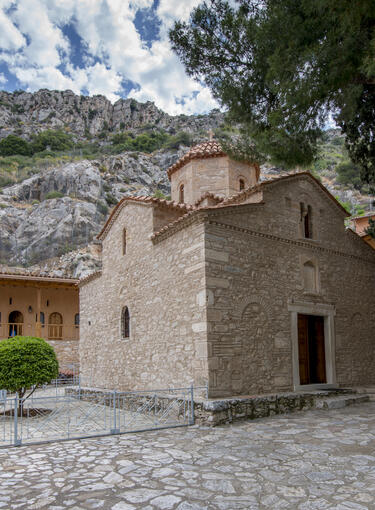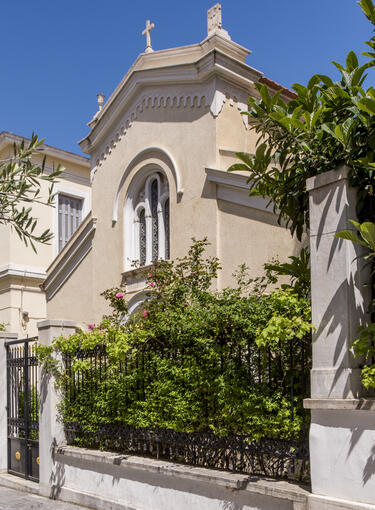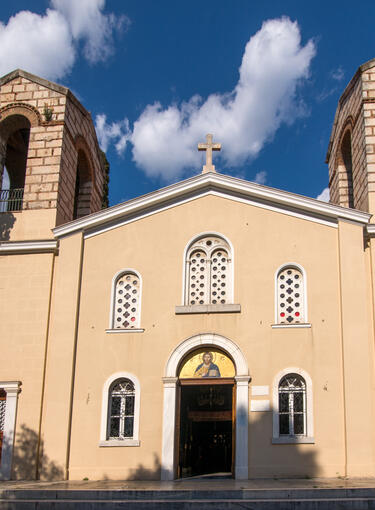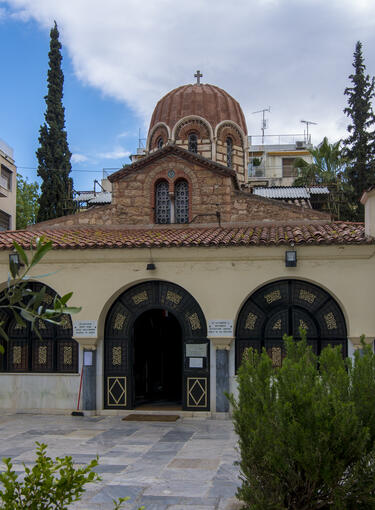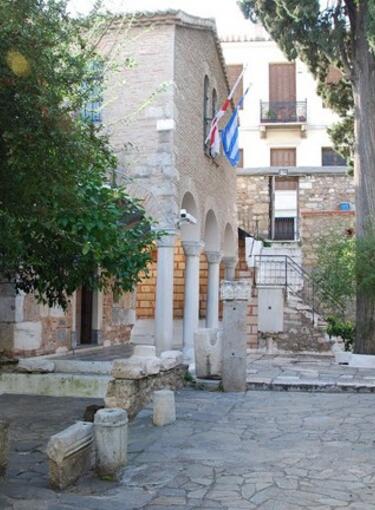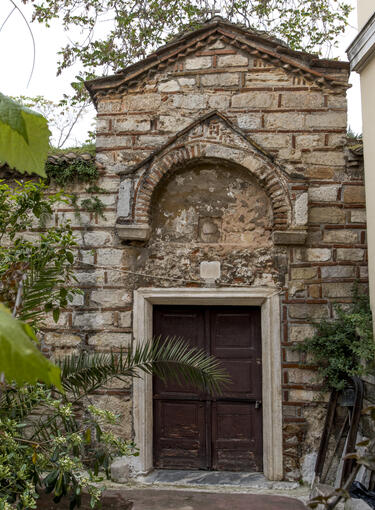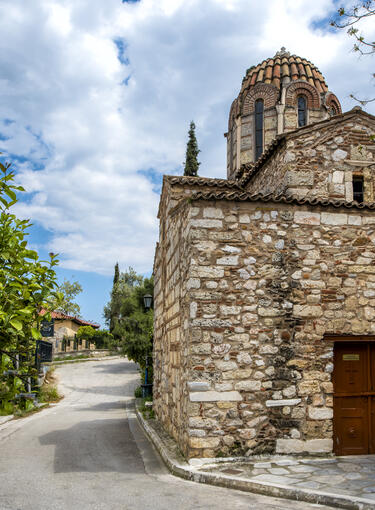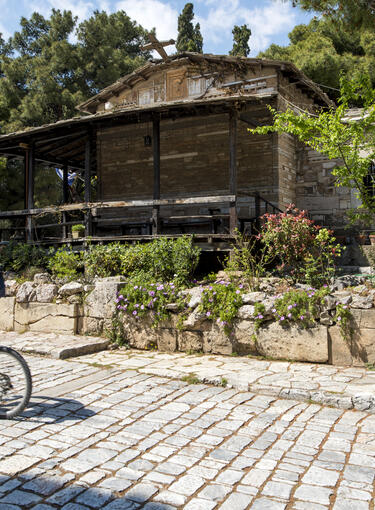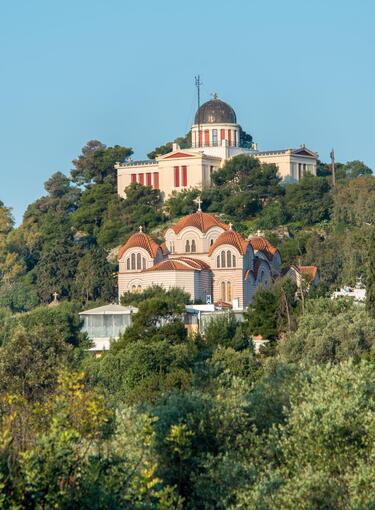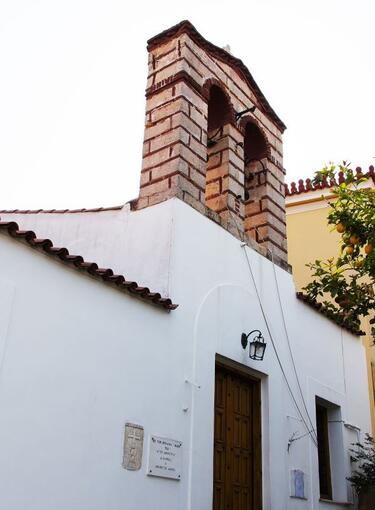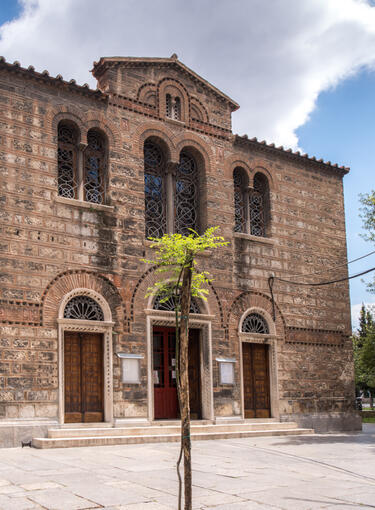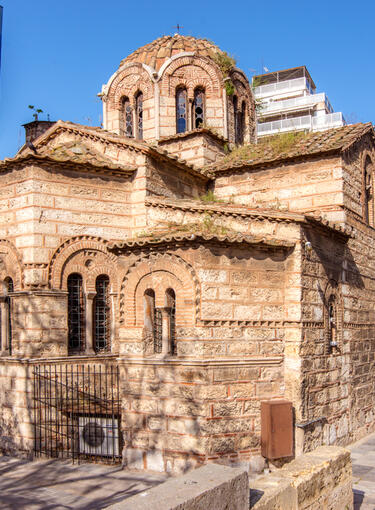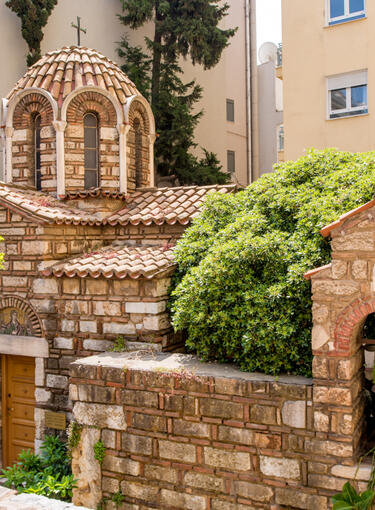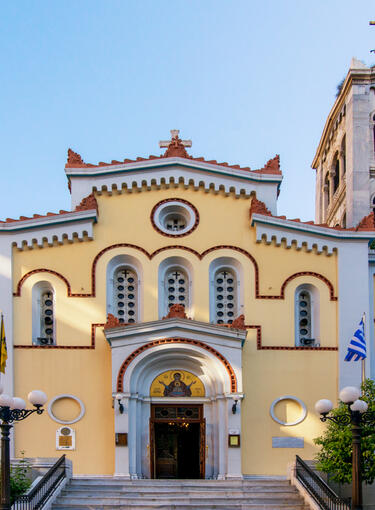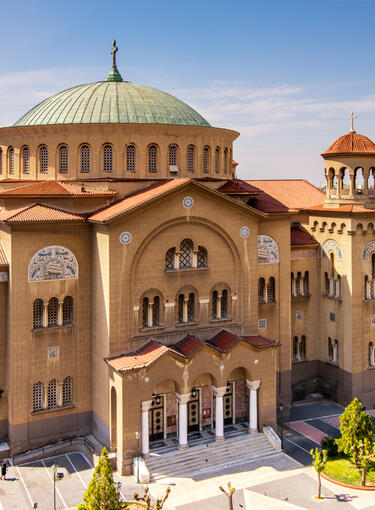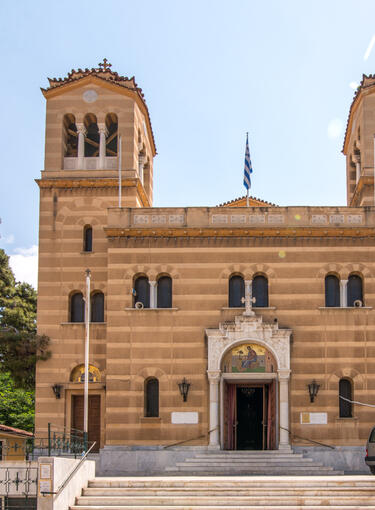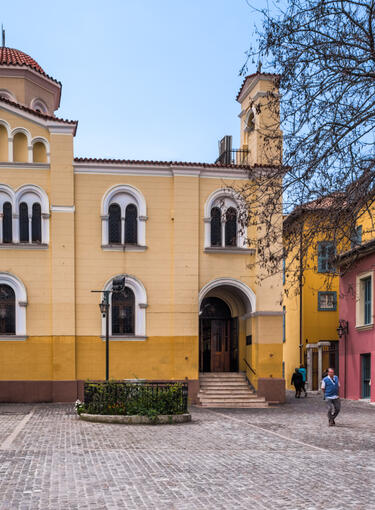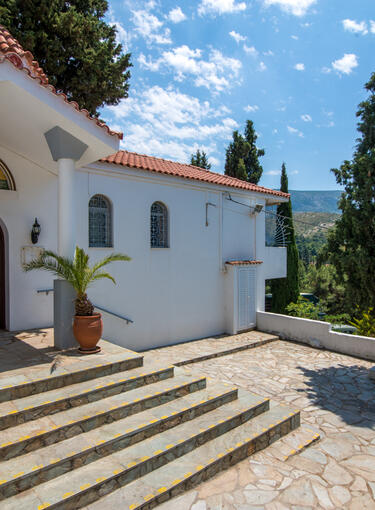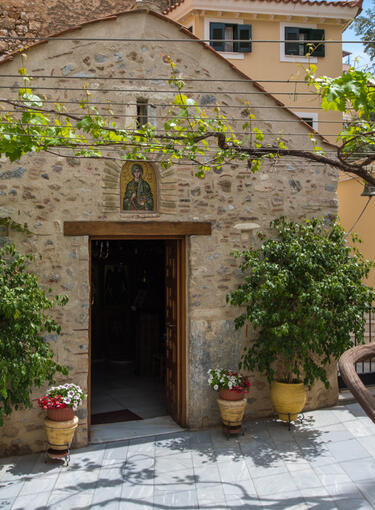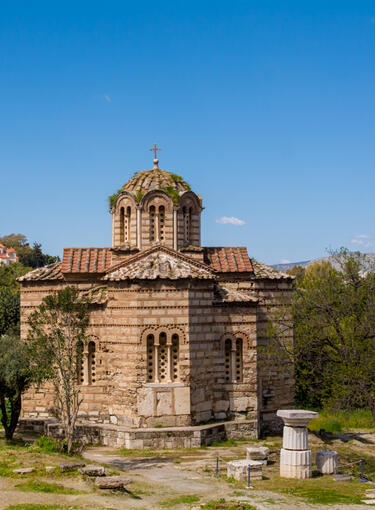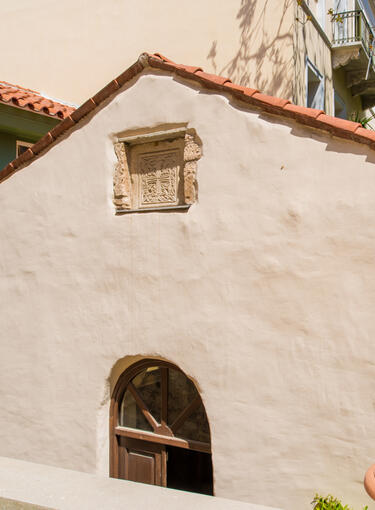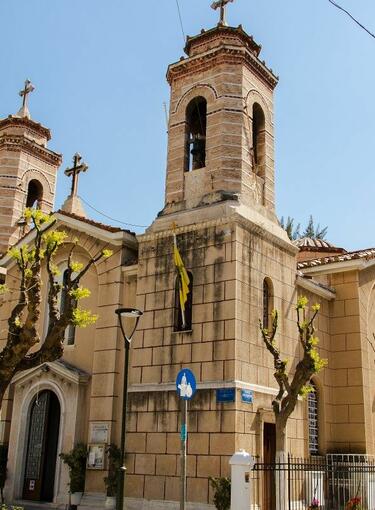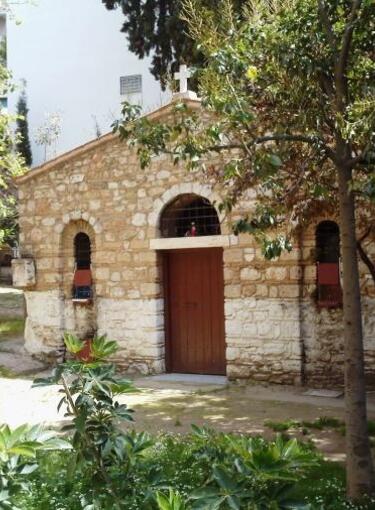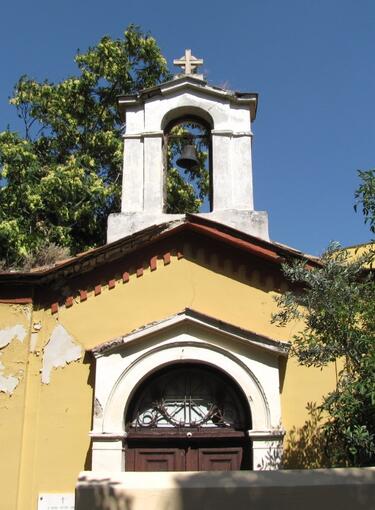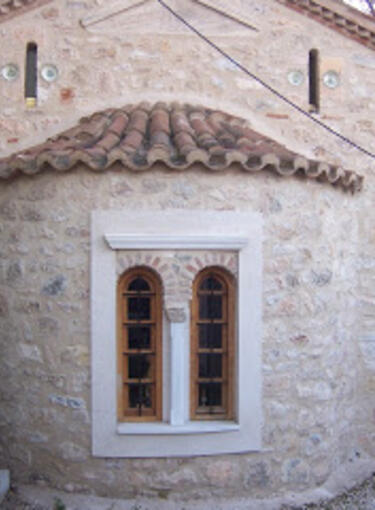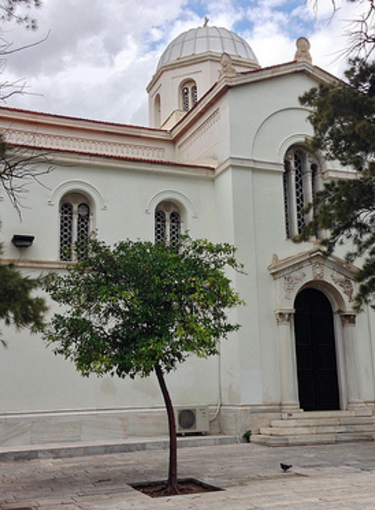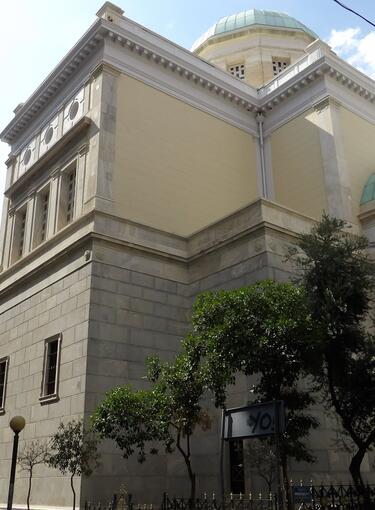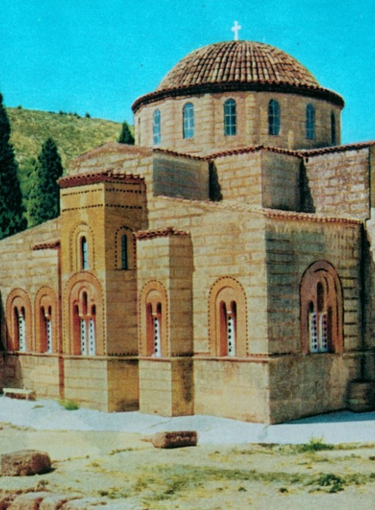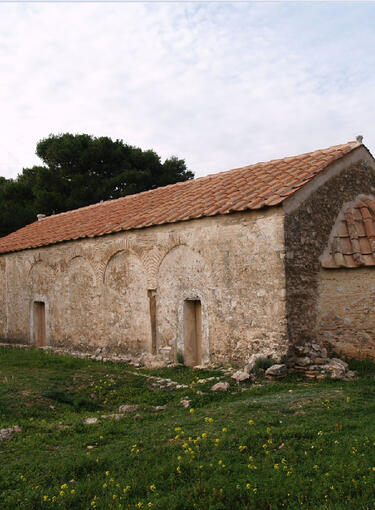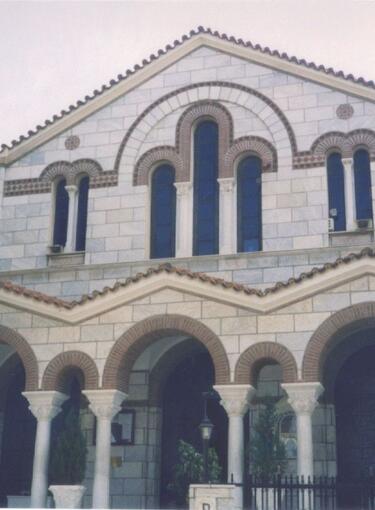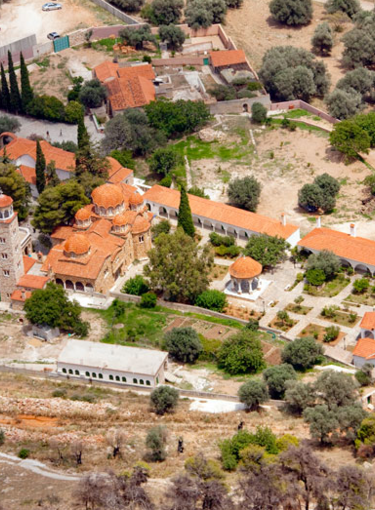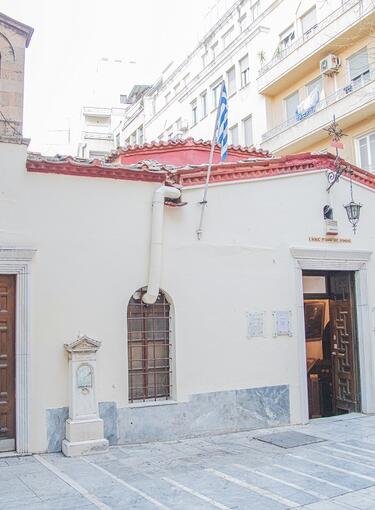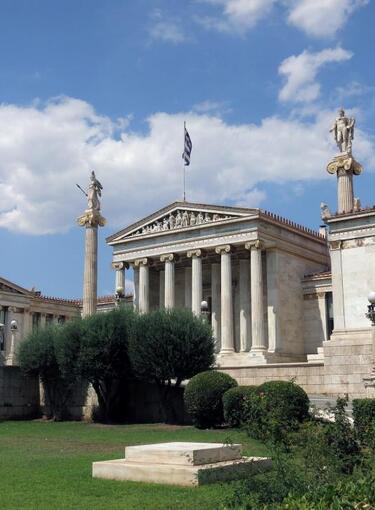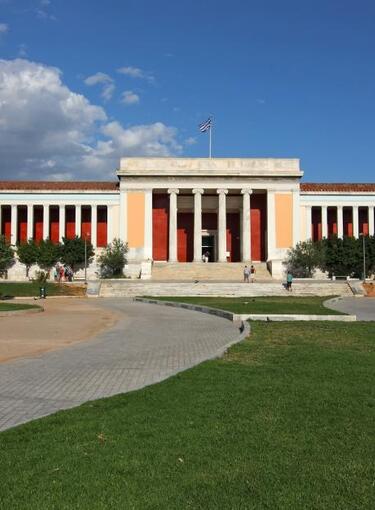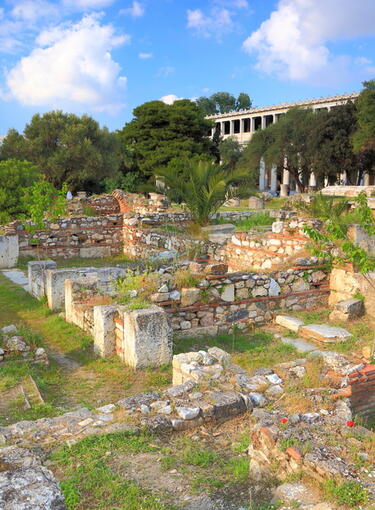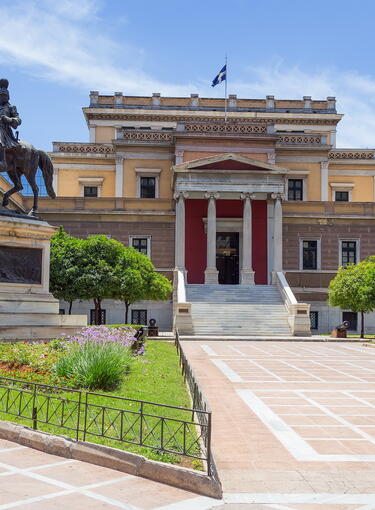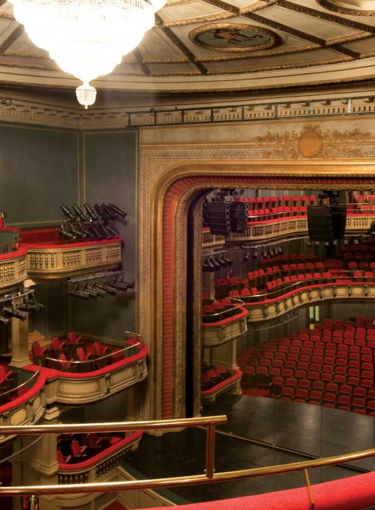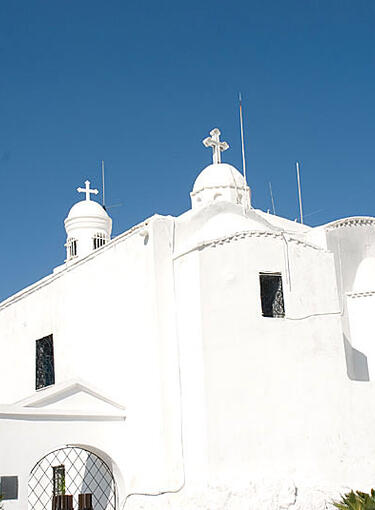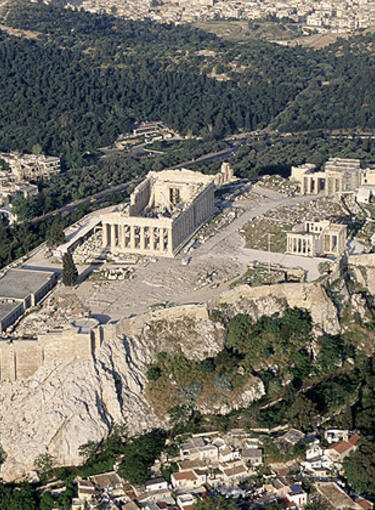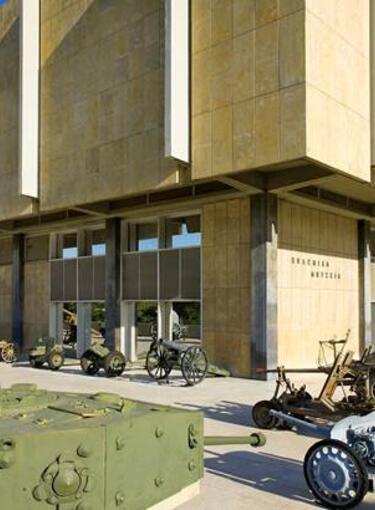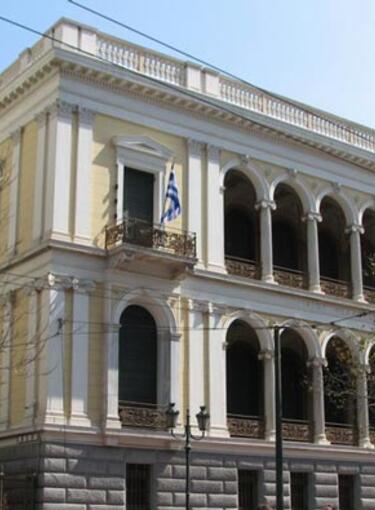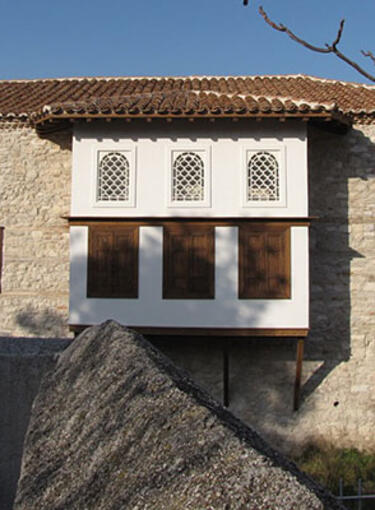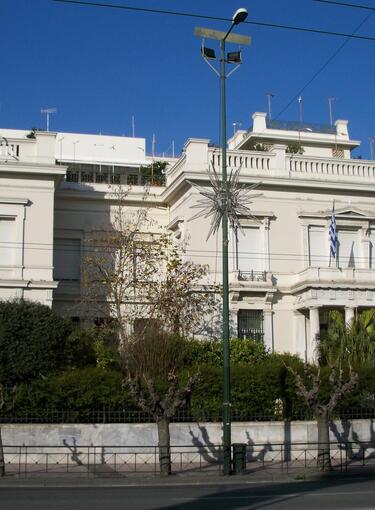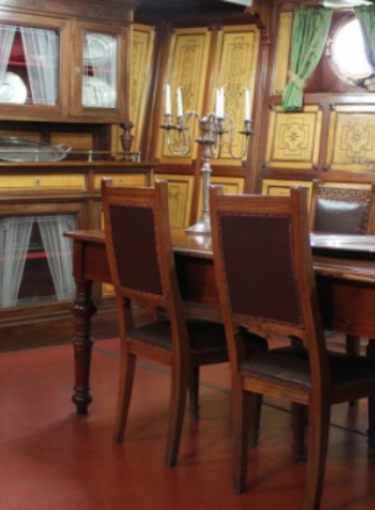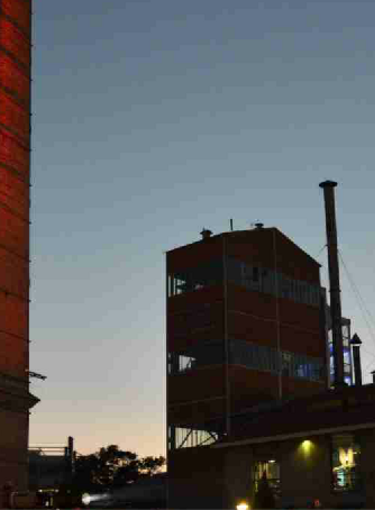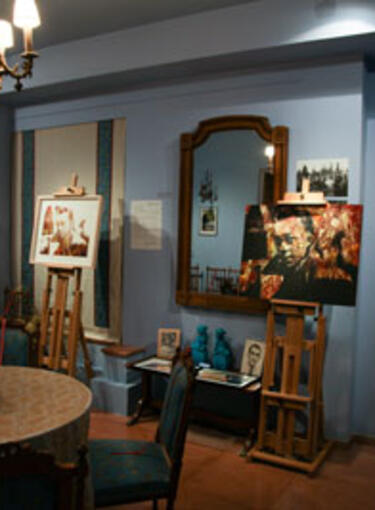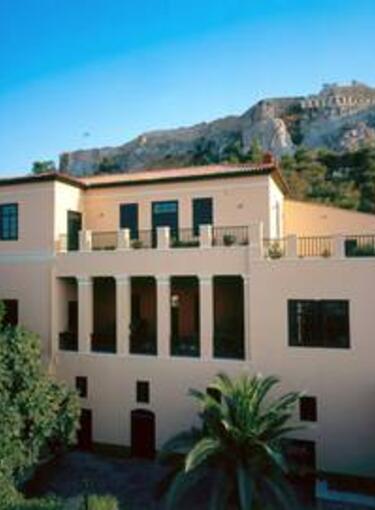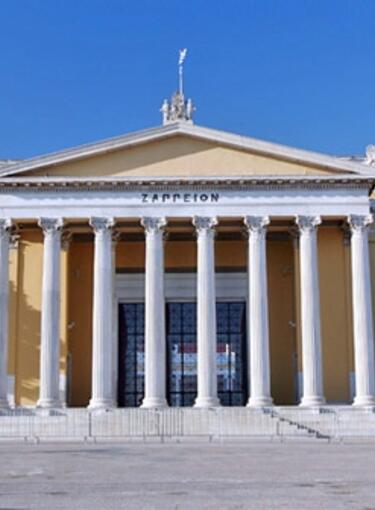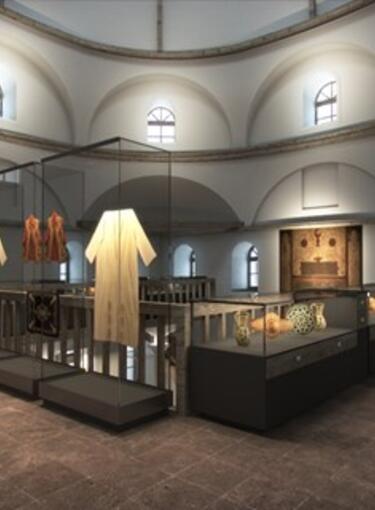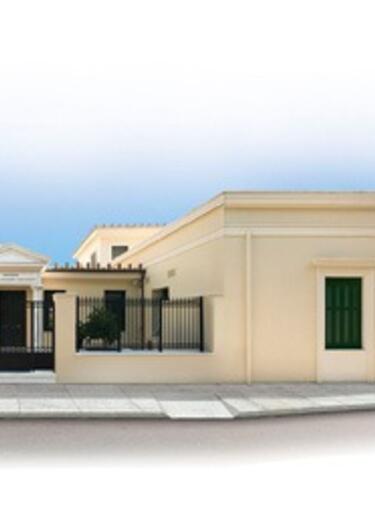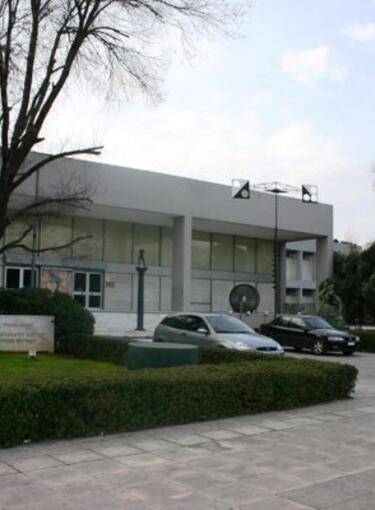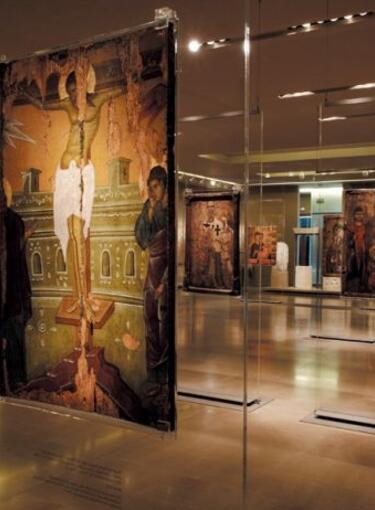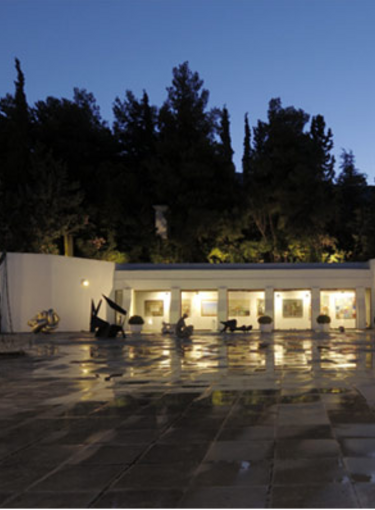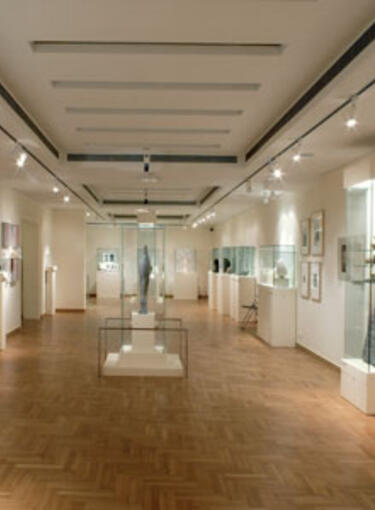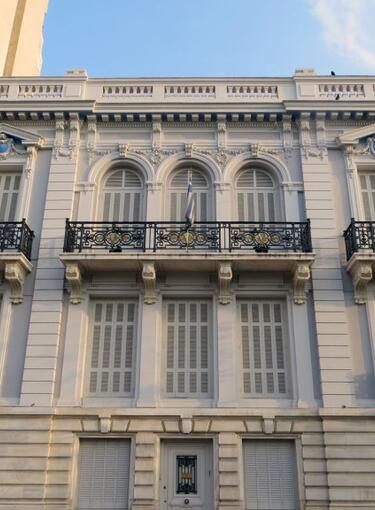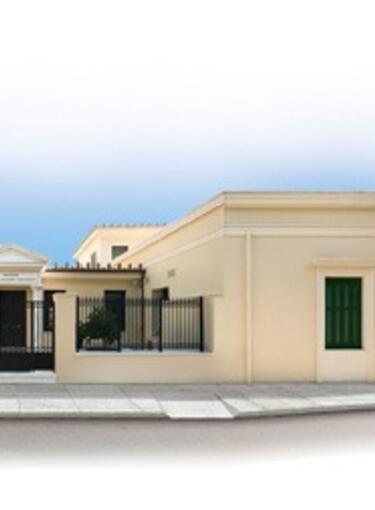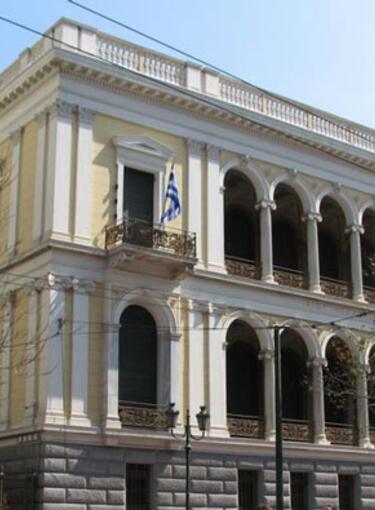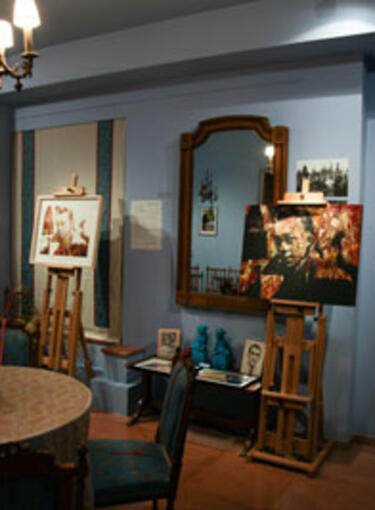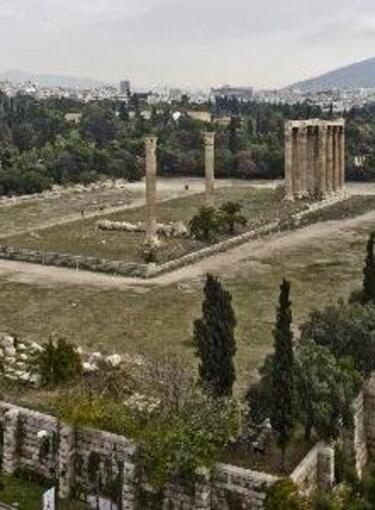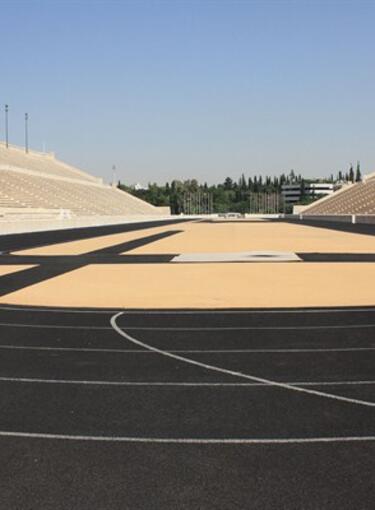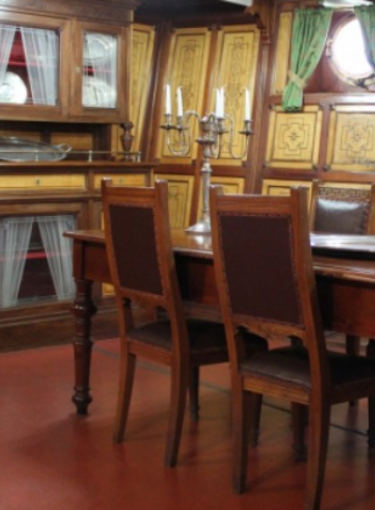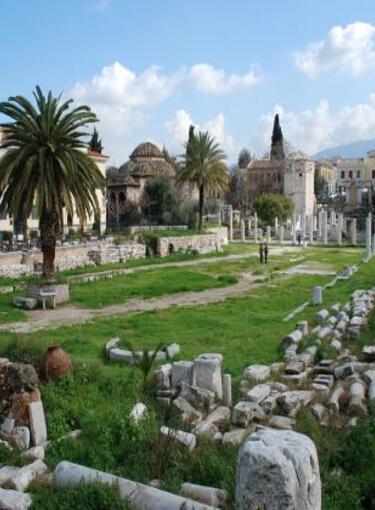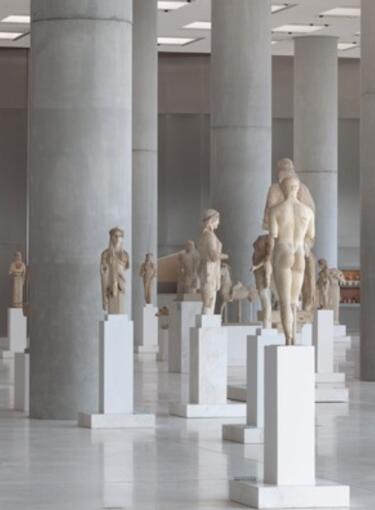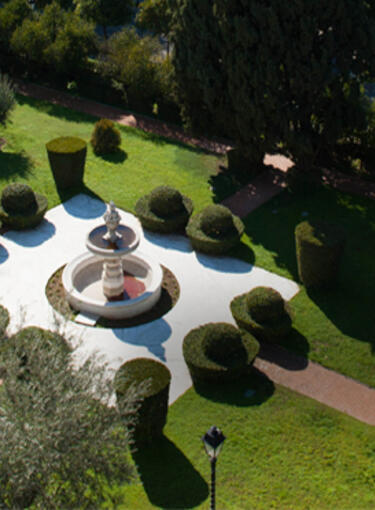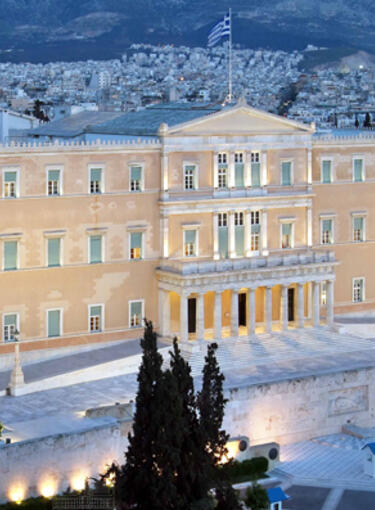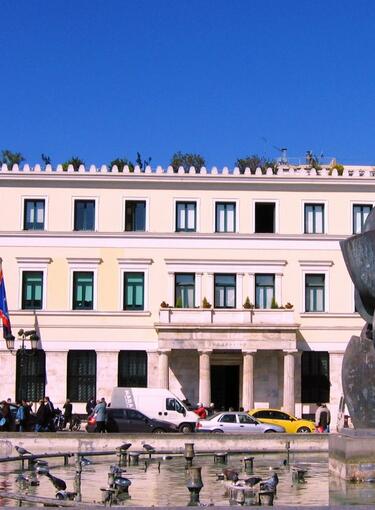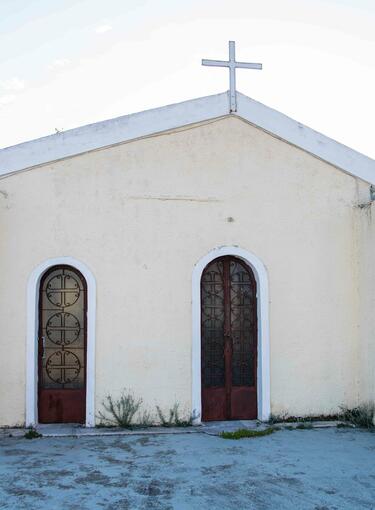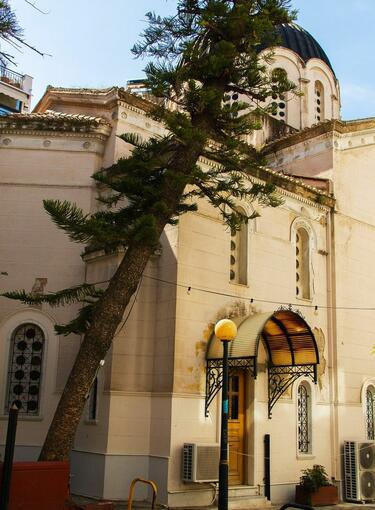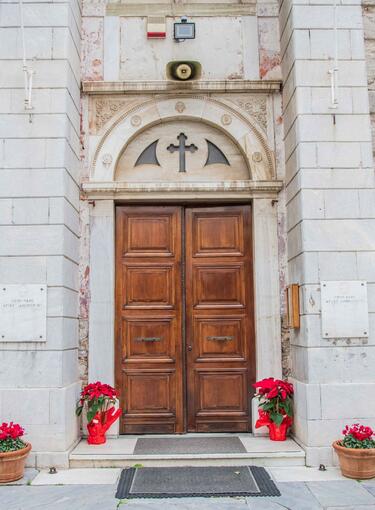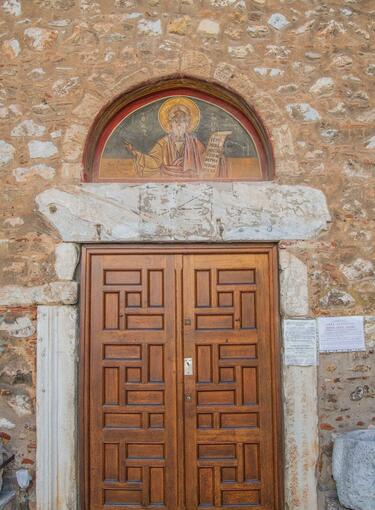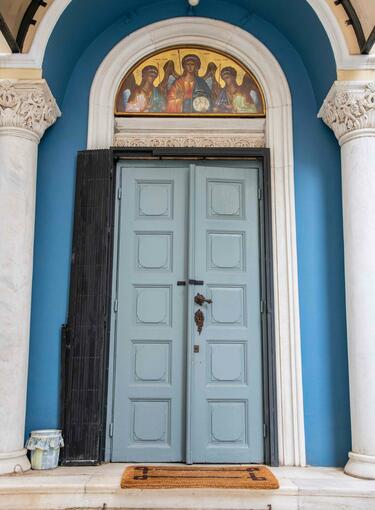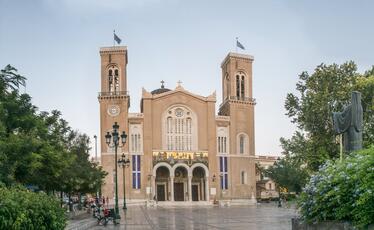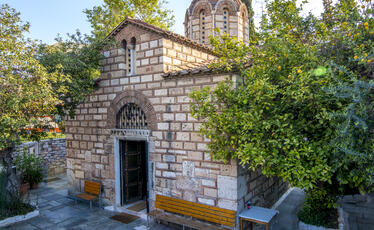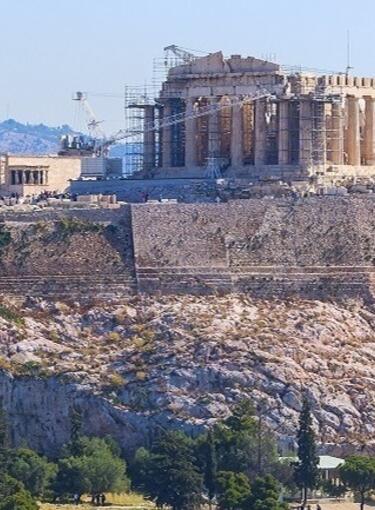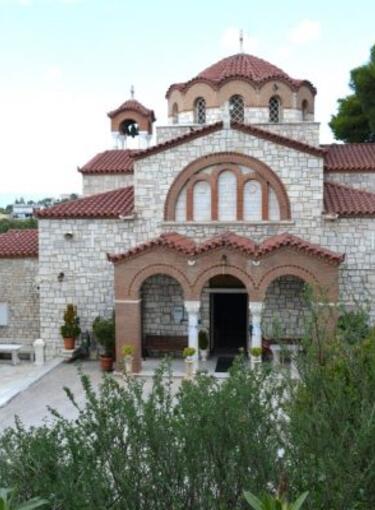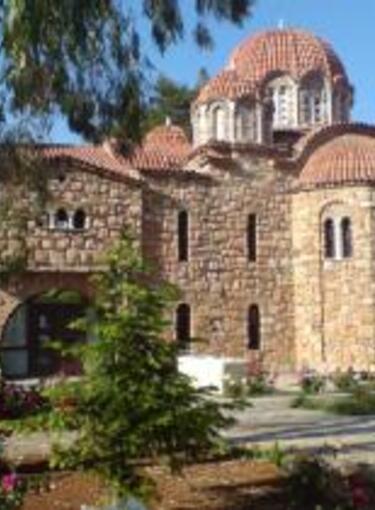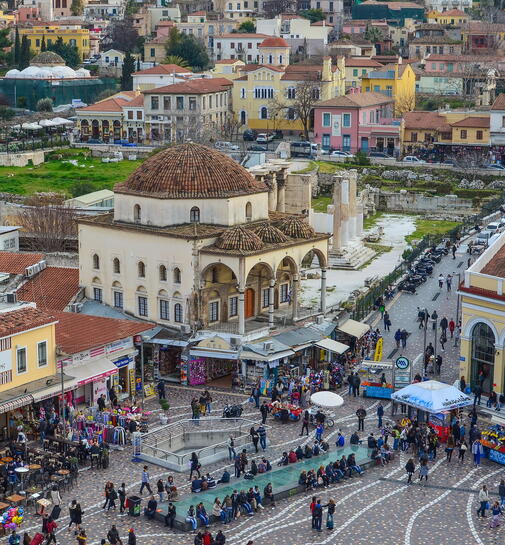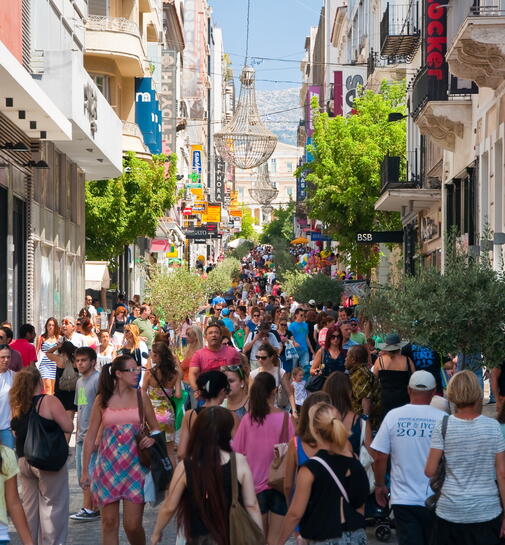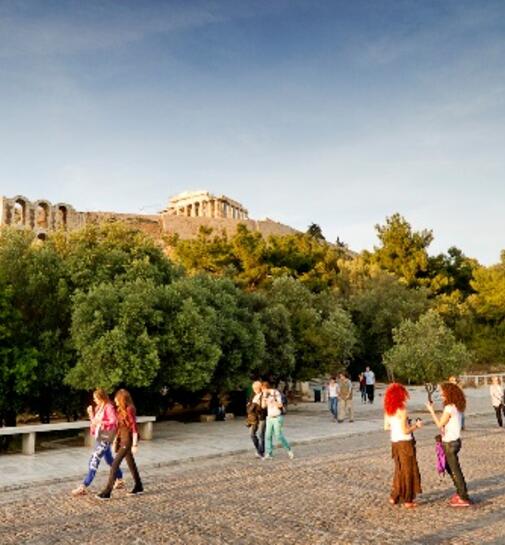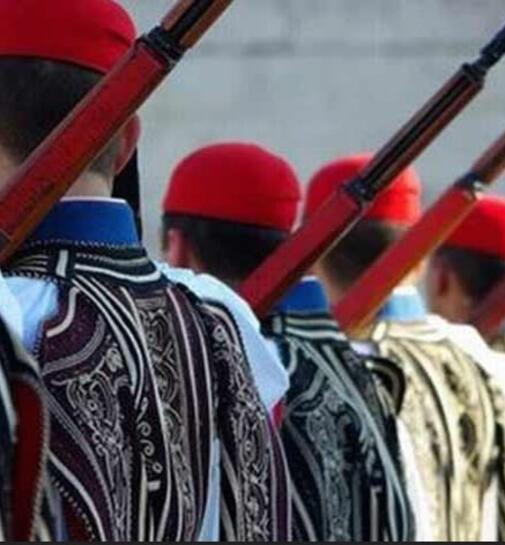A reference point for the area of the historical centre of Athens, behind the bustling Stadiou street, is the elegant church of Agios Georgios Karytsis. At the centre of the small square with the same name, it is surrounded by buildings related to the intellectual and artistic life of the city.
Its foundation took place in the 11th century and it belonged to the well-known Athenian family of Karitsis or Karikis. During the Greek Revolution in 1821 it suffered significant damages and by the end of the Revolution it was almost in ruins. However, it continued to be used. As a matter of fact, the Athenians in this church chose the delegation that was to greet the arrival of King Otto in Nafplio. The bad condition of the church led the people of the parish to address the architect Lysandros Kaftantzoglou, who in the middle of the decade of 1840 had undertaken the reconstruction of the church of Agia Eirini at Aiolou street. The church was reconstructed in the period 1845-1849, slightly less Byzantine is style and with less western influences than other churches of the same architect.
The church follows the type of three-aisled basilica with a dome, but an interesting variation is the central gate of grey marble, which is crowned by the white steeple. For the construction of the church they also used materials from the cemetery that was in the area during the antiquity and the Byzantine Period. In 1849 the dome partly collapsed and then they added supports (buttresses) on the side walls.
In 1895 the magnificent screen was made and the archieratic throne in 1901, works of the well-known wood-carver Ioannis Magiasis. Important painters of that time, such as Polychronis Lembesis, Dimos Georgantas and Dimitrios Pelekasis have contributed in the wall paintings of the church. A noteworthy detail is the oil painting of the parable of the blind, on the northern wall near the sanctuary, the work of the archaeologist Alexander Philadelpheus, who was a curator of antiquities and director of important museums.
Saint George Karytsi [Agios Georgios Karytsi]
In the historical commercial center of Athens, behind Stadiou Str., surrounded by tall buildings, stands the church of Saint George Karytsi. The church was constructed in the 11th century by the prominent family of the capital under the name Karytsis or Karykis. According to reports the first church was built by the Byzantine general Karykis. His descendant was Theophanis Karykis, who was appointed in 1579 as Ecumenical Patriarch enthroned in Constantinople. The church being a reference point of the city of Athens was selected on the 25th of January 1833 by approximately five hundred Athenians, who assembled there and selected after a tumultuous session representatives for the Council of Elders (the ‘demogerontia’) who went to Nafplion to pay their respects to King Otto.
With the passage of time the initial Byzantine church of the Karykis family was destroyed and in its place the descendants decided in 1836 to construct a new one. The construction works were completed after three years in 1849. The architect Lyssandros Kaftatzoglou (1812-1885) undertook the design and the implementation of the work, delivering a three–aisle vaulted basilica with cross-vaults and a dome. The specific style distinguishes this church from others designed by Kaftatzoglou and showing clear western influences in their church architecture. What however stands out in the entire edifice is the central entrance made of grey marble, which at its top is crowned by a white bell-tower.
The frugal, plain windows are crowned by terracotta elements which transverse their curved superior part and harmonise to the Byzantine-type tiles covering the conchs and the dome of the church. Marble remains from an ancient cemetery in the area were utilized during its construction. For an unknown cause in 1849 the vault of the church collapsed and then for its support the placement of buttresses (supports) at the side walls was adopted.
The visitor upon entry in the main church is impressed by the wooden carved templon of 1895 and the Bishop’s throne of 1901, both works by Ioannis Maniatis. The subtle technique which was adopted during its crafting is impressive, as following the models of Eastern wood-carving it depicts representations from Orthodox liturgical life with a particular clarity and harmonious exposition. The icons of the four Evangelists with their symbols, on the lunettes of the Katholikon originating from the Tinian icon painter Dimos Georgantas, who studied at the Athens School of Fine Arts, with Nikiforos Lytras as teacher and subsequently at the Munich Academy with Nikolaos Gyzis overwhelm with their expressivity. The dome is adorned with the depiction, enclosed in gold decoration, of Christ Pantokrator, which bears the same–named inscription. Perimetrically, small semi-circular windows contribute not merely to the entry of external light but also to the creation of a solemn atmosphere.
The Theotokos enthroned holding in her embrace the Holy Infant, surrounded by two angels, embedded in gold decoration, looms in the conch of the holy bema mesmerizing the eye of the pilgrim with her imposing and simultaneously penetrating gaze. The depiction is a work by Dimitrios Lempesis, icon painter of esteemed value, who is included among the most significant painters of the era of the late 19th and early 20th century. Worthy of reference are the three Hierarchs, crafted by the icon painter Dimitrios Pelekasis, who by their humble and simultaneously imposing presence recall the great teachers of the Orthodox Christian Faith.
At the northern wall of the church, close to the Sanctuary, there is to be discerned with difficulty a highly significant oil painting, ‘The Parable of the Blind’. Jesus Christ stands to the right, followed by the circle of his disciples, teaching the renowned parable. It is a creation of the archeologist Alexandros Filadelfeas (1866-1955), who served as head of the ephorate of antiquities and director of important museums of this country, such as the Acropolis Museum and the Museum of Ancient Olympia, and moreover he was the founder of the museums of Sikyon and Nikopoli. The depiction in painting of the parable contains western–style components, which constitute borrowed components for the author from his studies in Germany.
Informations
Additional
Date:
1845-1849
Season:
Modern
Holy Metropolis:
Archdiocese of Athens
Address:
Karytsi Square 2, HIstorical Centre 10561
Access:
Metro
Syntagma / Panepistimio Station



